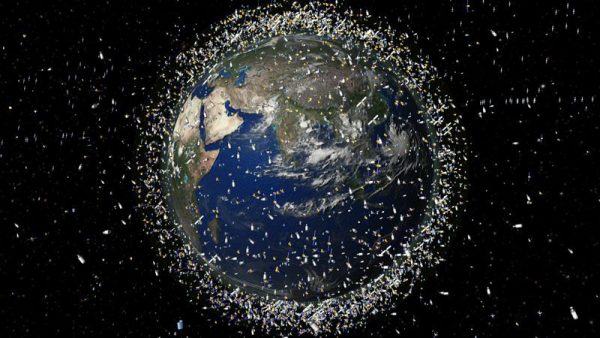Hello Nature readers, would you like to get this Briefing in your inbox free every day? Sign up here.
Spaceflight company SpaceX is set to launch 60 more of its Starlinks communications satellites into orbit today, with hundreds more scheduled this year. And SpaceX is just one of many companies planning to launch tens of thousands of satellites in the coming years. Astronomers fear that these ‘megaconstellations’ could disrupt radio frequencies used for astronomical observation, create bright streaks in the night sky and increase congestion in orbit, raising the risk of collisions.
Experts are suggesting ways to mitigate the impact of megaconstellations:
• Share detailed satellite location information that allows astronomers to schedule around them.
• Paint Earth-facing surfaces of the satellites a dull black so they appear fainter.
• Shift satellite frequencies away from those used for radio astronomy.
• Temporarily shut off satellite communications as they pass over radio-astronomy facilities.
• Develop a global collision-avoidance system that automatically detects potential crashes.
Last week, gun-toting members of Russia’s security services raided the storied Lebedev Physical Institute of the Russian Academy of Sciences, home to seven Nobel laureates. The institute’s director has derided the incursion as a “masked show”, and some scientists have speculated that it was spawned by a rivalry with another physics institute linked to President Vladimir Putin. The New York Times explores what the case reveals about tension between politics and science in Russia.
The New York Times | 6 min read
A genetic analysis of a transmissible cancer that affects mussels reveals it probably spread between species on opposite sides of the world by hitching a ride on ships. “There’s no natural explanation for how that happened without human help,” said biologist Michael Metzger. The news follows evidence that humans might have also had a role in spreading a canine cancer among dog populations — and has prompted speculation that contagious cancers are much more common than thought.
The New York Times | 5 min read
Read more: How a contagious dog tumour went global (Nature, from 2014)
Features & opinion
A new documentary about the gene-editing tool puts scientists and the thrill of discovery centre stage, writes reviewer Amy Maxmen. But the film suffers from bad timing: it was nearly finished when biophysicist He Jiankui claimed he had created the first gene-edited ‘CRISPR babies’. Whether that moment turns out to be an inflection point or an aberration, not grappling with it reduces the documentary into an exploration of the technology’s origins, rather than its future.
“One of the hardest parts of reproducibility is getting your computer set up in exactly the same way as somebody else’s computer is set up,” notes neuroscientist Kirstie Whitaker. Happily, there is a tool that can reduce that work to a single command — and there are other tools that can help you actually use it. Discover Docker, Binder, Code Ocean and a host of others that help researchers to run each other’s computational analyses as painlessly as possible.
A huge concrete coffin holds almost 90 million litres of US nuclear waste on the Marshall Islands. Now sea-level rise is eating away at the dome, and the United States is not interested in helping the tiny Pacific Ocean republic do anything about it, reports the Los Angeles Times. “I’m like, how can it [the dome] be ours?” said Hilda Heine, the president of the Republic of the Marshall Islands. “We don’t want it. We didn’t build it. The garbage inside is not ours. It’s theirs.”







